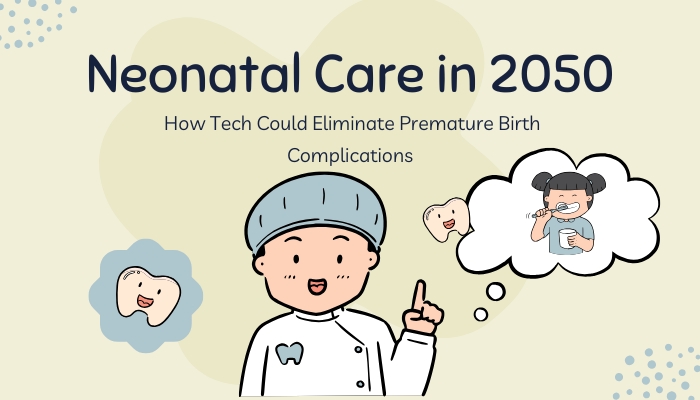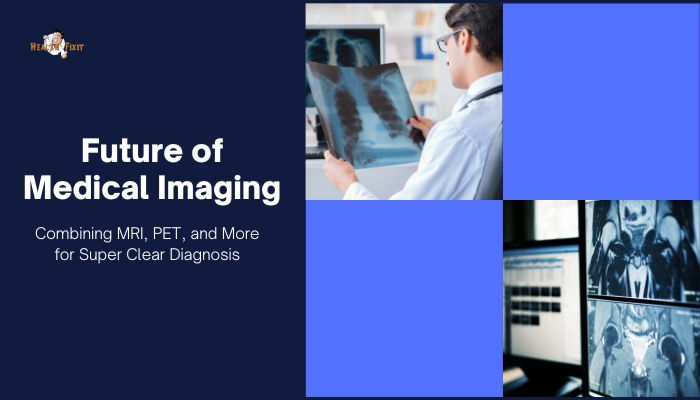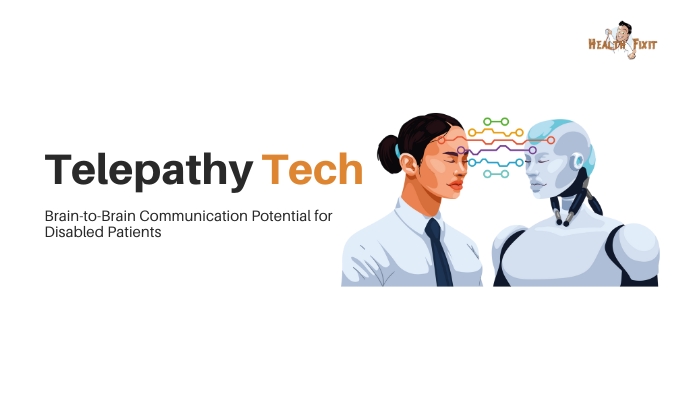Introduction
Premature birth remains a leading cause of infant mortality and lifelong health challenges. But as we look toward 2050,
rapid developments in fetal medicine, AI-driven monitoring, and even artificial wombs could drastically reduce or eliminate complications associated with preterm delivery.
Advances in stem cell therapies, organ support devices, and predictive analytics promise a future where many dangers faced by premature infants might be minimized or entirely averted.
This article explores emerging technologies that could reshape neonatal care, potentially revolutionizing outcomes for babies born weeks—or even months—too early.
The Scope of Preterm Challenges
Global Burden of Prematurity
Over 15 million babies are born prematurely worldwide each year. Many face respiratory distress, underdeveloped organs, and increased risk of infection. In lower-resource regions, lack of advanced NICU facilities makes survival uncertain.
Long-Term Consequences
Survivors can face conditions like bronchopulmonary dysplasia, cerebral palsy, or learning disabilities. Addressing these complications demands prolonged medical care. Reducing or preventing such outcomes is a main driver behind next-gen neonatal innovations.
Artificial Wombs and Advanced Incubators
Ex Vivo Uterine Environment Therapy
Research labs have made significant strides creating artificial wombs, or “biobags,” to support extremely premature lambs. This system circulates oxygenated fluid,
mimicking amniotic conditions. By 2050, scaled versions could serve human preemies—potentially bridging the gap for those born at the edge of viability.
Next-Gen Incubators
Future incubators may be far more than heated boxes, incorporating:
- Continuous monitoring of blood gases and vitals with minimal invasive lines.
- Automated intravenous or nutritional delivery.
- Sensors measuring neural activity, guiding early intervention for neuroprotection.
Ethical and Regulatory Considerations
Deploying an artificial womb for humans involves complex ethical questions—like defining the boundaries between “fetus” and “neonate.” Regulatory frameworks must ensure robust safety data before wide adoption. Societal acceptance may hinge on transparent trials and proven success with smaller-scale prototypes.
Advanced Respiratory and Organ Support
Microfluidic Lungs
Preemies often struggle with immature lungs. Future artificial lung devices—microfluidic oxygenators—may handle gas exchange externally
, letting fragile lungs rest and develop. This approach, akin to ECMO but smaller and more refined, can drastically reduce lung injuries from high-pressure ventilation.
Organ Printing or Replacement
If advanced 3D bioprinting can create partial organ scaffolds for neonates—like micro-lung or hepatic assist devices—these partial replacements could sustain an infant while their own organs mature.
Early lab success in printing small functional tissue suggests a possible route for bridging organ insufficiency.
Gene Therapies for Maturing Organs
Additionally, emergent in utero or early-life gene editing might fix genetic defects that hamper organ development, drastically reducing post-birth complications. Though highly regulated, such therapies may become common in 2050, supporting robust organ development pre-birth.
AI and Predictive Analytics in the NICU
Continuous Monitoring and Early Alerts
Smart sensors capturing heartbeat variability, oxygen saturation, and multiple biomarkers feed data into AI models. Even subtle anomalies can trigger early warnings, guiding interventions like adjusting ventilation or suspecting sepsis well before conventional signs appear.
Personalized Nutrition and Medication
Neonates differ widely in metabolism, especially if preterm. By analyzing daily blood chemistry, AI might fine-tune feed formulations or drug dosages, optimizing weight gain and organ support while minimizing side effects.
Virtual NICU Assistants
Robotic or software-based “nurse assistants” in the NICU could handle routine tasks (adjusting IV rates, changing sensor patches) or chat with parents. This synergy reduces nurse burden, ensuring consistent and precise care around the clock.
Maternal-Fetal Medicine Breakthroughs
Preventing Preterm Labor
Gene editing or advanced hormone therapies could reduce risk factors like cervical insufficiency. Real-time cervical or uterine sensors, integrated with home-based monitors, might detect early labor signals—prompting timely medication or bed rest instructions.
Cell Therapy for Fetal Development
Injecting specific stem cells or growth factors in utero might accelerate fetal lung or brain development for those at high risk of preterm birth. While experimental, the notion of “prenatal regenerative therapy” is gaining traction among fetal medicine specialists.
Infectious Disease Surveillance
Some preterm births link to maternal infections. Next-gen tests (like molecular point-of-care or AI-driven risk modeling) identify threats earlier, facilitating prophylactic antibiotics or immune therapies to prevent the inflammatory cascades that spur premature labor.
Long-Term Outlook: Halting Extreme Prematurity
Are 20-Week Infants Viable?
Currently, the “edge of viability” sits around 22–24 weeks. With artificial wombs and powerful organ support by 2050, some foresee survival even for 20-week gestations. However, question remains about long-term neurological or organ outcomes.
Universal Access vs. Cost
Cutting-edge NICU tech (e.g., artificial womb) is expensive. Ensuring equitable global distribution of advanced neonatal solutions demands international collaboration and cost-lowering measures, so these breakthroughs don’t remain limited to wealthy nations.
Preventing Early Birth Altogether
Ultimately, the best route is preventing prematurity. Strong maternal healthcare, managing chronic conditions, and advanced genetic screening—coupled with new interventions—may drastically lower early labor rates, meaning fewer babies require extreme NICU measures.
Challenges and Considerations
Ethical Frontiers
Should we push viability earlier and earlier? How do we weigh potential disabilities or uncertain quality of life for extremely preterm neonates? The moral debate intensifies as technology outpaces prior “limits of viability.”
Parenting and Emotional Ties
Extended time in artificial wombs or advanced incubators changes typical parent-child bonding, at least initially. Finding ways to maintain the emotional connection—skin-to-skin contact or advanced VR “presence”—will be crucial for parents and infant development.
Regulation and Testing
High-stakes devices for fragile neonates require exhaustive safety trials. Regulators must thoroughly evaluate novel therapies or in utero interventions to avoid unforeseen harm. This can slow adoption but ensures responsible clinical use.
Practical Steps for Caregivers and Parents
- Stay Updated: If you face risk of preterm birth, watch developments in new NICU technologies or clinical trials—some might be open for high-risk pregnancies.
- Ask About Specialized Centers: Certain advanced therapies (like ECMO or partial artificial womb trials) are offered at select neonatal research hubs.
- Embrace Telehealth: Remote monitoring before birth or after NICU discharge helps catch complications early—particularly relevant for complex or newly trialed interventions.
- Seek Holistic Support: Regardless of new tech, emotional and psychological support remains integral for families coping with preterm births.
Conclusion
By 2050, neonatal care could be scarcely recognizable compared to today— from sophisticated NICU pods that precisely mimic womb conditions,
to gene-based therapies that help fetal organs mature faster, to AI systems that continuously guard fragile preemies from infection or organ failure.
Though ethical concerns and cost barriers persist, the potential to nearly eliminate many severe complications of prematurity is on the horizon
. With continued research, thoughtful governance, and collaborative global efforts, these nascent technologies might one day ensure the world’s tiniest patients can flourish—despite arriving early—free from the devastating burdens long associated with preterm birth.
References
- March of Dimes. Premature Birth Report Card. 2021.
- Partridge EA, et al. An extra-uterine system to physiologically support the extreme premature lamb. Nat Commun. 2017;8:15112.
- O’Rahilly R, Muller F. The embryonic period revisited. J Anat. 2010;216(4):430–451.
- Bell EF, et al. Mortality, in-hospital outcomes, and the challenges of extremely preterm birth. N Engl J Med. 2018;379(7):611–623.
- Sloboda DM, et al. Pregnancy and fetal environment: the short- and long-term outcomes for health. BMJ. 2020;371:m3352.
- Langer JC, et al. The role of advanced biomimetic incubators in improving preterm survival. Acta Paediatr. 2019;108(8):1385–1393.
- Jonas M, et al. Advances in genetic editing for prenatal therapy of congenital diseases. Curr Opin Obstet Gynecol. 2021;33(2):102–109.
- Lockhart E, Mears B. AI in NICU: real-time monitoring and the future of predictive analytics. J Pediatr Res. 2022;136:21–27.
- Gien J, Kinsella JP. Pathogenesis and treatment of bronchopulmonary dysplasia. Curr Opin Pediatr. 2021;33(2):172–181.
- Yuan S, et al. The ethics of artificial womb technology. Bioethics. 2020;34(3):201–208.





